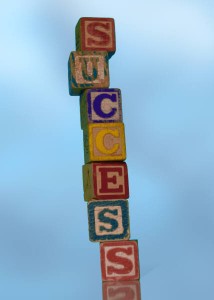
Last week I posed my own question that I needed an answer to:
Q: What do you do when you feel like you’ve tried everything with a group but the youth still have behavior issues? What suggestions do you have for my specific situation?
Thank you to everyone who offered advice and suggestions. They were all useful and valid suggestions and I appreciate you taking the time to interact and join in the discussion. I’d like to share the suggestions so that other youth workers in a similar situation can get more ideas from other experienced youth workers on the topic – because I know I’m not the only one with this problem sometimes.
Suggestion 1
A guest commenter who’s the wife of a youth pastor, a volunteer youth worker at her church and a social worker by education and experience suggested spending time with the leader of the group, maybe through tutoring or mentoring. The relational capital that’s developed through that one-to-one time can be key in the youth later being a leader and resulting in positive behaviors instead of negative ones.
Suggestion 2
Another suggestion came from a Twitter Follower who’s a writer, missionary and teacher with a passion for youth work overseas. He suggested that the group may need more ownership, something that we feel really strongly about here at Youth Workin’ It, but can also sometimes be challenging depending on the climate you’re working in. We agree with the commenter and it’s our assertion that as much ownership as you can provide to the youth should be given and it will inevitably improve youth behavior.
Suggestion 3
A few final suggestions came from Sam (The Teenage Whisperer), a youth justice worker whose work we love and respect immensely. She also regularly makes our youth work blog posts of the week list because she has a lot of great suggestions for working with youth. (Check out her site and subscribe to her blog – seriously, she’s great!)
Sam really emphasized the importance of individual work like our first commenter to help set the tone and work through possible emotional issues in a private setting. She also advised to be careful when trying so many approaches simply because you need something to work. It can cause youth, particularly vulnerable / at-risk youth to feel uncomfortable and / or unsafe emotionally.
Update
These were all excellent suggestions which is why I’ve included them here, so I don’t want any misunderstanding that I don’t think all of these ideas were fantastic simply because I didn’t use them, or have feedback regarding their use with this particular group.
It’s always so hard when you’re trying to describe what’s happening in a group, and I’ll be honest, I usually like to work things out on my own. I’m definitely very independent when it comes to my youth work practice and even offering it out for advice was a huge step in my professional development.
I’ve suggested individual work and meetings with the school since the beginning of our professional relationship, but unfortunately it’s just not possible at this time. There are definitely some home issues, race issues, ethnicity issues, authority issues and much more that I can see in the group and I’d love more time to work with the youth individually.
I would also love to give the youth more ownership and already give them as much as is possible within the group. However, the evidence-based curriculum I’m tasked with working through, as well as the school environment, are not conducive to the kind of youth participation I’d ideally like to see happening. I will say as well that the curriculum we’re using is great – I’ve suggested some of the approaches to other youth workers and it was very successful.
Finally, I definitely agree with the point about changing tactics. While I do try a lot of different things, I don’t believe that it has been unnerving to the group, but I will definitely keep monitoring it in case it is having a bigger impact than expected.
So… what did I do? My initial instinct with every group is team building, but because of the tight schedule and the curriculum, I didn’t do any on the first day as I usually do. Therefore I thought, it’s definitely time for some team building activities – particularly ones that cause them to work towards a common goal like the mat turn, barnyard animals and sharks in custard.
Challenge
Here’s the challenge with that – they’re mean to each other all the time. Even in P.E. when they’re on the same team, they hate on each other. How could I introduce an activity that was 100% guaranteed to cause strife, anger, tears, comments, bullying, etc.?
I’ve been working this whole time on trying to get them to self-regulate, self- problem solve and self-reflect. So what could I try that would help them self regulate AND mean that we could have some positive success at team building games?
The Answer!
The answer is the humble clothes pin.
I gave each young person three clothes pins – I also gave myself three. We pinned them on ourselves where ever we wanted. I explained that we would be playing some team building games and that in order to play, they had to keep at least one clothes pin. If they lost all of their clothes pins, they would have to sit out for the remainder of the session to do work.
The ways they could lose their clothes pins included verbal or non verbal communication that was blaming, threatening, name calling or exaggerating (the road blocks to bridge building that they’ve been learning about in the sessions.)
There was also a way to earn a clothes pin back through extraordinary examples of kindness and team work.
I was very strict. At first, several students lost a clothes pin. Even the youth who don’t ‘normally’ get in trouble (yeah, we had to avoid a few tears with those ones) lost a clothes pin or two. One youth who really struggles with his behavior, and more specifically his facial expressions, lost two of his three clothes pins in the first 10 minutes…
However… they all started to self-regulate their comments and provide positive encouragement. I praised and praised even the smallest examples of team work and patience.
They were all able to participate the whole time (which worked out well since the mat turn took 40 minutes!). They were rewarded with a communication and team building game that involves candy.
Result
Everyone had a great time – including me! We reflected as a group at the end and everyone agreed that the session was a huge success. I was careful to draw the connection between their improved communication and relationships, rather than just that it was a ‘fun game day.’
Several youth commented on how much they enjoyed having the clothes pins to help remind them about their actions and words. One even suggested that we cut back on the clothes pins next week down to two and then the final week to one so that everyone had to work harder and the entire group agreed! I will be providing extra clothes pins to those that will still need them though – everyone isn’t at the same place or learns at the same pace as we know.
As I was leaving, I encouraged them to keep using their strategies for solving conflicts and to pretend they still had their clothes pins on; to think through what they want to say and then think about whether or not Ms. Shae would take a clothes pin for such a comment.
I’ll see the group this week and am hoping that it’s been a positive week as they begin to learn how to work together as a team. Thanks again for your advice!
Question: Do you have any youth work questions or problems that you need answers or advice for? Let us know in the comments below or contact us here.
You can also connect with us by:
- Signing up to receive our posts via email
- Following us on Twitter
- Liking us on Facebook
- Signing up to our RSS feed
 This Getting To Know You icebreaker provides a good opportunity for your students to learn more about each other, so it’s perfect for using when you need some
This Getting To Know You icebreaker provides a good opportunity for your students to learn more about each other, so it’s perfect for using when you need some  Earth Day is on April 22 each year. If you’re wanting to plan some Earth Day activities for students, here are 12 great ideas for activities you can do with them, whether they’re elementary, middle school or high school students:
Earth Day is on April 22 each year. If you’re wanting to plan some Earth Day activities for students, here are 12 great ideas for activities you can do with them, whether they’re elementary, middle school or high school students:
